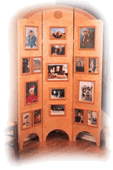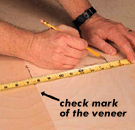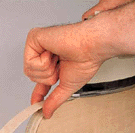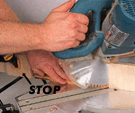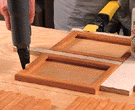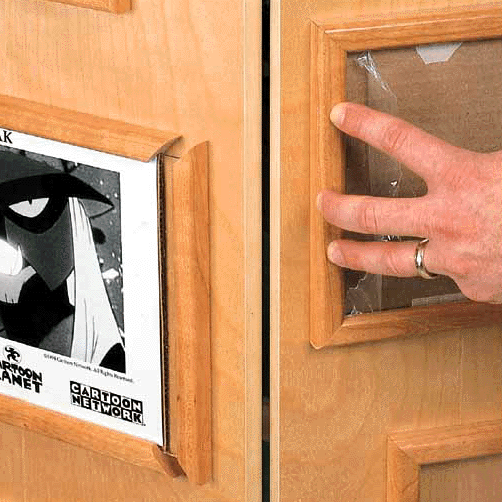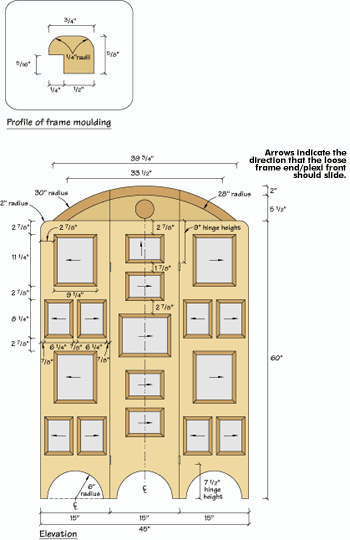|
An Arc
on Top
The distinctive arced trim on top of the screen is simply a lamination of
three pieces of thinner wood, cut at the panel joints and doweled in place
on top of the screen. Begin making the arc by milling out blanks of maple
and cherry a little larger than the size given in the Schedule of Materials.
Lay out the arc using the method suggested in the caption. Cut the arcs out
on the band saw and sand the edges. Finish sand to 220 grit and find a spot
to do the laminating. Start by making sure that your work surface is clean
and flat. Mark the centers of each arc on its bottom edge. I used a
fast-tack glue to laminate the arcs. This worked well because it has a short
open time and you don't have to put a lot on the surface to get a good
joint. Apply glue and line up the three pieces with the center line flush on
the bottom edge. Place the first clamp on the center with a backing strip of
wood. Add more clamps as needed. Make sure to check the bottom edge for
slippage and adjust accordingly. When the glue is dry, clean off the bottom
edge and joint if necessary. Apply the 4" medallion to the front of the arc
with glue and small nails. On your work surface, place the panels together
as they would be attached. Place the arc on the top edge and center it on
the assembly. Mark where the joints are and follow them to the top edge of
the arc. Using a handsaw, cut the arc into three pieces. Clean up the sawn
edges with a block plane and dowel the pieces into their respective panels.
You can glue these arc sections in or leave them loose. I left mine loose to
make it easy to move the screen. Apply two coats of clear finish to all the
panels and arc sections. Go ahead and rout the notches for the
double-swinging hinges and attach them. |

The easiest way to make this radius is to get a piece of butcher paper for
layout. Lay down a center line and mark a square line at one end. Mark off
the two radii from this mark as well as the two trim heights. Determine the
bottom edge of the wood trim and set it on the appropriate trim height mark.
Using trammel points, lay out the radius according to the diagram.
|
